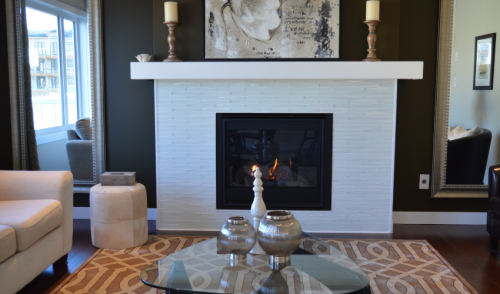{article.name}
Winter Fireplace and Stove Care

- Share this:
- Share on Facebook
- Pin on Pinterest
- Tweet on Twitter
Nothing is cozier on a cold winter day than cuddling up in front of a glowing, crackling fireplace or enjoying the robust heat of a freestanding stove. At the same time, however, nothing is more disappointing than if your fireplace or stove fails to light, lets off too much smoke, has a foul odor, or otherwise doesn’t function properly. With the right winter fireplace and stove care, however, you can enjoy the rich heat and steady glow of your fireplace or stove all winter long.
Before Winter Arrives
It is best to prepare your fireplace and stove in early autumn to be sure it is safe and operational before cold weather arrives. This ensures there is enough time for repairs or replacement if necessary, long before the extra heat is critical. Hiring a professional chimney sweep is a good option to clean the unit, pipes, vents and chimney to remove ash and creosote buildup that can cause a fire hazard. The chimney sweep should also inspect the entire fireplace or stove assembly – draft, damper, box, lining, gaskets, blower, etc. – to be sure there are no cracks or other hazards. This preventative care can be sure your fireplace or stove is ready to go as soon as you want to light it up.
Fireplace and Stove Care in Winter
As you’re using your fireplace or stove through the winter, proper ongoing care is essential to keep it operating safely and efficiently. Whether you use the fireplace or stove as a principle source of heat or only on extra cold occasions, be sure to…
- Use a Fire Screen Choose a sturdy screen that is the proper size for your fireplace or stove, and position it carefully. This will prevent stray sparks from flying out of the firebox and will also keep pets away from any open flame.
- Use Only Hard Woods Harder woods such as oak, ash, maple, and hickory are best for burning and will provide more even heating with less creosote buildup. All wood should be well-seasoned and clean and dry, with no extra debris or dirt.
- Clean Out Ash Regularly Ash will build up and eventually clog vents, reducing the efficiency of the stove or fireplace. Be sure the unit is completely cool before you clean out ash, and store the ash in a thick metal bucket until it is fully cool before disposing of it.
- Use Proper Flooring Be sure your fireplace is well seated in its box, and a freestanding stove should be on fireproof, level flooring such as tile or brick. Adequate clearance is necessary around the entire unit to be sure air can flow well and the heat will vent properly.
- Check for Adequate Ventilation Check the heating unit’s ventilation regularly to be sure pipes, chimneys, and vents are not blocked. Inspect for cracks or holes as well that could cause smoke to leak where it isn’t welcome and make any repairs safely.
- Keep the Chimney Capped While you need the chimney to remain clear for smoke to exit, a good cap will keep rain, snow, and ice from getting inside the chimney and wetting the stove or fireplace. A sturdy cap will also keep birds, bats, squirrels, and other pests from getting in.
- Clean the Glass Regularly If you want to see your fire in all its glowing glory, clean the glass on the fireplace front or stove doors regularly. This will remove soot and ash buildup and allow for better heat radiation. Be sure the glass is completely cool before handling it, however.
- Keep the Fire Small A smaller fire will burn more efficiently because there is more air circulation around the base, and there will be less smoke and buildup. Keep the fire toward the back of the firebox, and never use flammable liquids or chemical starters to ignite the fire.
- Install and Inspect Smoke Alarms Be sure you have adequate smoke alarms through your home, and check that they are working properly. Change the batteries and test the alarms regularly, and add carbon monoxide detectors as well for even more safety.
- Keep an Extinguisher Nearby Always keep a suitable fire extinguisher near your fireplace or stove, but out of reach of the heat. Know how to operate the extinguisher properly, and inspect it regularly to ensure it is charged and ready for use if needed.
Finally, whenever you use your fireplace or stove, be alert to any unusual smells, louder cracklings, extra smoke, or other unknown reactions. Do not leave the fire unattended, and take all proper safety precautions to keep warm in safe, efficient ways. With proper care, your stove or fireplace can a delightful source of winter heat and a comfort on every cold day throughout the season.

Comments